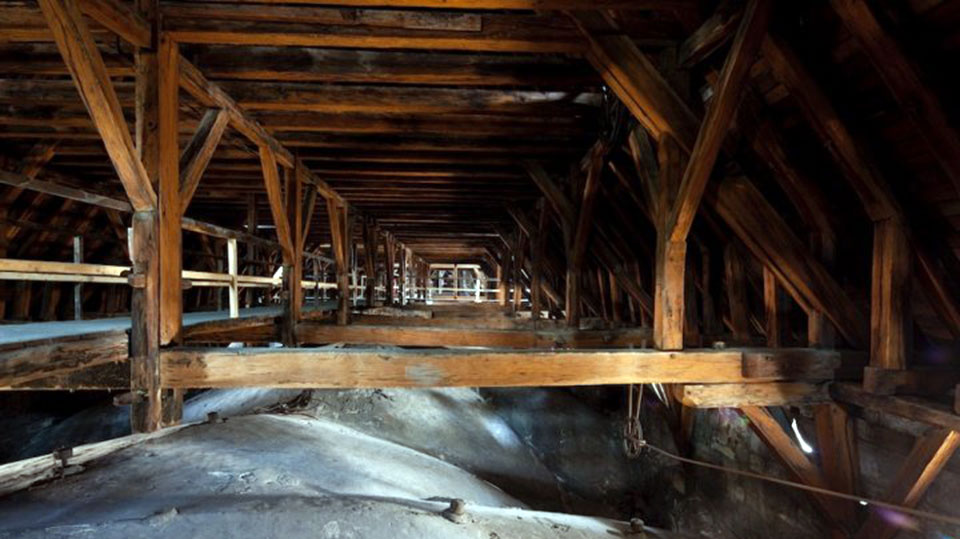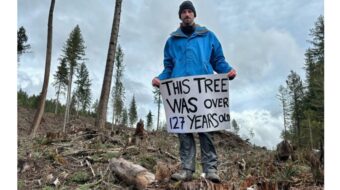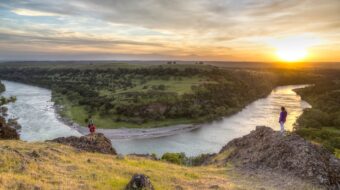
On April 15, 2019, watching television footage of Notre Dame Cathedral burning, I wept like millions of other French people and others around the world. The flames which invaded the screen brought back memories of my first visit to the cathedral as a child, reading the novel by Victor Hugo (Notre Dame de Paris, 1831), the familiarity of its gray silhouette against the Parisian sky. Historic monuments are like beautiful shells, containers of the essence of our lives. We create complex emotional ties to them, investing them with much more than the simple recall of our motions and deeds.
At the same time, Notre Dame speaks to us of the lives of men and women who constructed it over the centuries, who have gone there to pray, to smile, to love, to weep, to say “I do.” An edifice of stone, of wood, of sweat and tears, this cathedral represents both space and time, as if everything that occurred there over the centuries were concentrated in a single place. We must invite poets and geographers to investigate the emotional link which draws us to this place we call “Notre Dame de Paris.” Because it is, without doubt, this compound of the collective and the individual, of the cultural and the historic, that makes the presence of Notre Dame much more than a simple religious proposition.
Making a place in our lives for our pains and wounds
Like many, I was agitated by the shock of April 16, 2019. I wanted things to be repaired, the cathedral to be reconstructed, the drama to disappear. Then came the debate: contemporary building, or faithful reconstruction? There has been a lot of talk about the difficulty of accepting reality. The fact is the historic edifice has disappeared. And to try to reconstruct old fortifications with new techniques is illusory, a mistake. Even worse, it is symptomatic of our difficulty accepting pain, wounds and suffering, and making a place for them in our lives. I am not a psychologist, but I think psychologists call this “the grief cycle” and prescribe going on with life despite the absence of someone or something we dearly loved. This gaping wound that fills our day-to-day existence with pain we cannot, and should not, ignore.
This is 2021, not 2019. COVID-19 is still with us and, to date, has carried off more than 77,000 French citizens and, with them, a great number of our illusions and our priorities. Tourism was an important source of revenue for France and for Paris, its capital. Today our borders are closed, as they were in other troubled times. The epidemic ravaging the planet is just a prelude to what awaits us: innumerable calamities, all related to global warming. The confinement imposed by the virus should “serve us as a model,” Bruno Latour tells us in his latest book, “a way of familiarizing us, little by little with the more general confinement imposed by what we call, euphemistically, the ‘ecological crisis.’”
In that context, making a deliberate choice to cut down 100 ancestral oak trees to rebuild the spire of a cathedral and its wooden framing seems like reality blindness, or worse, an inability to understand the lessons of the current situation. A thousand trees, some of them hundreds of years old, are as important as cathedrals for the biodiversity of our forests. The first of which, we have learned, have to be felled at the very start of Spring, even though birds and squirrels are nesting there.
The construction of Notre Dame de Paris was undertaken at a time of widespread land clearance and cultivation, which brought untold riches to the territory of France. The great stone cathedral was an offering to God, and the forest which enabled and sustained its construction over centuries reflects the belief of the 12th and 13th centuries that man was superior to nature, and that it was his stewardship that made plants and trees blossom and fruit.
The political courage of turning the page
We have arrived at the end of this story. Our systematic domination and exploitation of nature have put all of life at risk. The years to come are going to prove that this is true, as what scientists for decades have been warning us will come to pass. Real political courage today would be to agree to turn the page. And not to think that you can try to rebuild a world that is definitively past.
The wound left in Paris by the fire in Notre Dame is a reflection of the rending of the tissue of existence by our cities and our ways of life. To project ourselves into the future and to begin our own reconstruction might require inventing another kind of reparation, something akin to what the Japanese call kintsugi, a delicate art which uses beautiful varnishes, some of them made of gold, to repair the fractures in heirloom furniture, calling attention to the wounds rather than hiding them, understanding that, when we accept the way things age, we ennoble them.
In the world that is ours today, a world badly wounded by a raging pandemic and that seems fragile and diminished in the face of imminent dangers, it would be so beautiful to believe that the oaks of Notre Dame are exactly where they are supposed to be, in the forest. And that the 100-year-old trees, which this new way of seeing would allow to be spared, are the pillars of a novel and harmonious interrelationship of humanity with all else that lives, which is up to us to construct. Each age has its cathedrals. Let us dare to build tomorrow’s.
Translated for People’s World by Peter Lownds. The original publication in Reporterre, a French online ecology journal, can be found here.












Comments